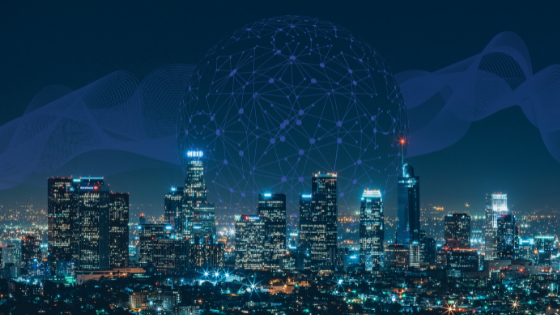The evolution of smart cities in the past few years are leading to a change in the way citizens interact with urban services. This new model is based on responding to new challenges, to satisfy new necessities. Large cities and urban areas have always had a key role in the development of civilisation. The Internet has changed the way we communicate and interact among us and the way we access culture, leisure, shopping, etc. More importantly, we changed the way we relate to our cities. It’s no longer shocking to hear that 60% of the worldwide population will live by 2020 in cities and these will account for 75% of energy consumption and 80% of greenhouse gases.
Smart cities are places where the traditional networks and services are made more efficient with the use of digital and telecommunication technologies, for the benefit of their inhabitants and businesses. However, the smart city concept goes beyond the use of ICT (Information and Communications Technology) to use resources more efficiently and release fewer gases. It means smarter transport networks, upgraded water supply and waste disposal facilities, and more efficient ways to light and heat buildings.
What were once traditional cities are now users of technology to manage and govern our environment. And they involve everyone: from national government, to local government, to businesses and citizens.
How are smart cities even a thing just now, if people have always lived in cities?
Cities are becoming huge -megacities- and systems of that magnitude are complex. But it’s nowadays when we realise there are 2 separate but linked approaches for Smart Cities: one looks at infrastructure to get things working more effectively. For example, measuring and predicting traffic flow in cities to prevent congestion. The other focus looks at behaviour change to encourage people to use the systems in a better way. This second approach means using the devices that people have already got to motivate them to be the best they can be within the city. Cities are all about people, and the connectivity between people, so we shouldn’t talk only about technology, but also about motivation.
Some cities, like Río de Janeiro, are already running what we know as ‘management centre’ or ‘integrated brain’, which makes communication easier between different services and solutions of the city’s ecosystem -such as mobility, water, energy, environment, leisure and tourism-. They also have tools to predict behaviours of the city related to the use of its services. Some examples of new measures implemented in those urban areas are the installation of intelligent cameras that control traffic, an irrigation system that works according to the needs, sensors in parking spots connected to apps so that car drivers know where can they park, or an advanced Wi-Fi system that enables connectivity on the streets, the bus and underground train. Barcelona has recently put into practice Internet of Everything (by Cisco) to become a Smart City. Here you can watch a video showing how they do it.




